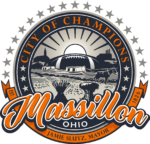
The purpose of the Historic Preservation Commission is to:
- Maintain and enhance the distinctive character of historical buildings and historical areas in the City.
- Safeguard the architectural integrity of the City's listed properties and historic resources within designated districts.
- Safeguard the heritage of the City by preserving areas, places, sites, buildings, structures, objects and works of art which reflect elements of City's cultural, social, economic, political or architectural heritage.
- Seek alternatives to demolition or incompatible alterations within designated areas and to listed properties before such acts are performed.
- Afford the widest possible scope of continuing vitality through private renewal and architectural creativity within appropriate controls and standards.
- Encourage development of vacant properties in accordance with the character of the designated districts and listed properties.
|
ALTIMUS-STAHL, MANDY |
|
DAY, JEFF |
|
DOLL, JEFF |
|
HORNER, FRED |
|
MILLER, GARY |
|
PICARD, JOHN |
|
SMITH, JULIE HARWIG |
|
THORNBERRY, JEFFREY |
|
VOGT, MARGY |
In 2018 the Massillon Downtown Historic District, which includes 91 buildings and Veterans Memorial Park, was officially designated on the National Register of Historic Places. The district joins a number of Massillon sites already listed on the National Register, including Five Oaks on Fourth Street NE and Spring Hill Historic Home, according to the National Register of Historic Places.
View the National Register Searchable Database here!
Chapter 1349 of the Massillon Codified Ordinances outlines the powers and duties of the Historic Preservation Commission and regulations within the Historic District.
"It has been said that, at it’s best, preservation engages the past in a conversation
with the present over a a mutual concern for the future.-William Murtagh, first keeper of the National Register of Historic Places
"When a historic building is maintained and periodically rehabilitated, the financial benefits of that investment are not the owner’s alone. Adjacent building owners, nearby businesses, and local government all receive monetary benefit. The entire place within which the historic property exists benefits."
-Donovan Rypkema, The Economics of Historic Preservation
